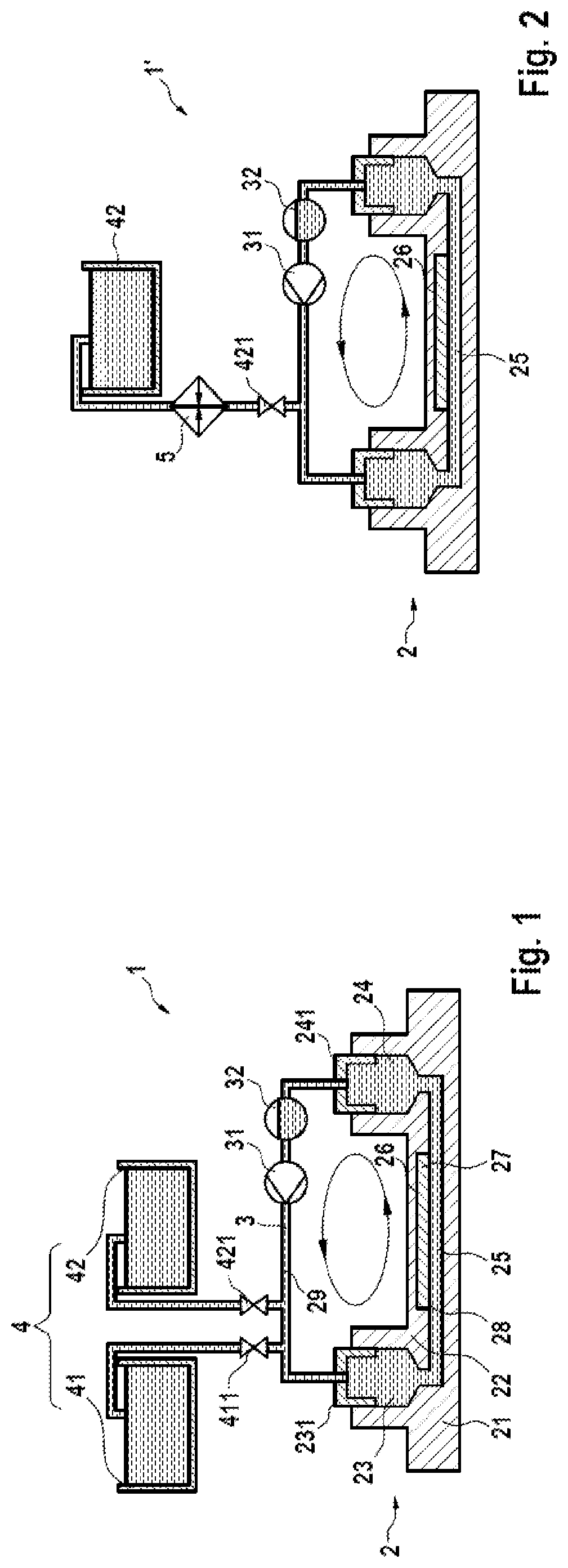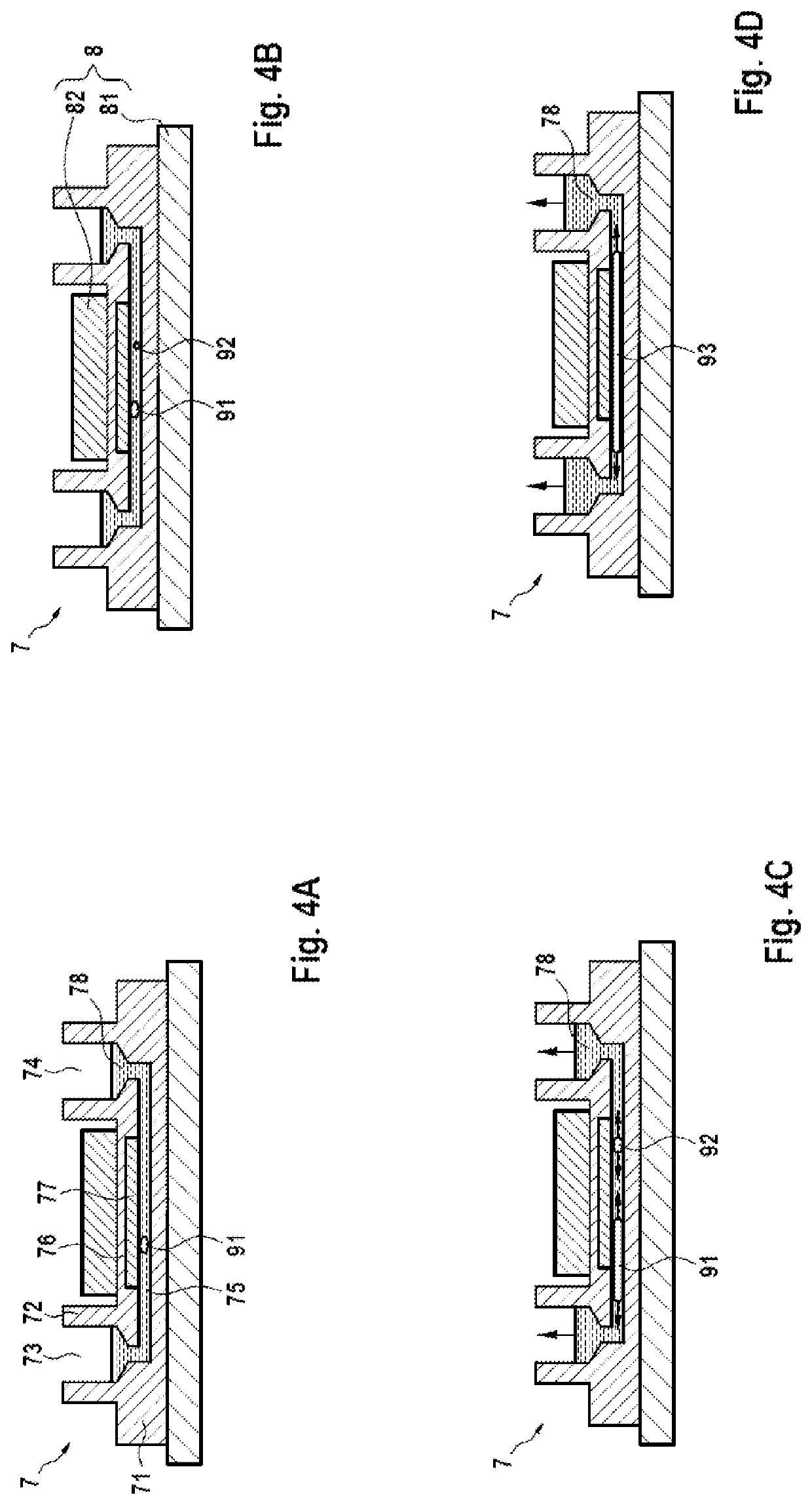Microfluidic system for digital polymerase chain reaction of a biological sample, and respective method
a microfluidic system and polymerase chain reaction technology, applied in fluid controllers, laboratory glassware, chemistry apparatus and processes, etc., can solve the problems of increased surface-to-volume ratio, undesired sample liquid vaporization, and gas bubble generation
- Summary
- Abstract
- Description
- Claims
- Application Information
AI Technical Summary
Benefits of technology
Problems solved by technology
Method used
Image
Examples
examples
[0064]FIG. 1 shows a microfluidic system 1 for dPCR of a biological sample according to a first embodiment of the present disclosure in a schematic illustration, with the main components provided either in illustrative cross-section or as pictogram. The microfluidic system 1 as illustrated in FIG. 1 includes a microfluidic device 2 in the form of a microfluidic chip, the device 2 showing a similar structure as the state-of-the-art chip 7 depicted in FIG. 3B, wherein the device 2 substantially consists of a lower plate 21 and an upper plate 22, and provides an inlet 23, an outlet 24, and a flow channel 25 connecting the inlet 23 to the outlet 24. Furthermore, an array of reaction areas 26 in the form of microwells or nanowells is provided in the flow channel 25 at its upper side, i.e. at the inner side of the upper plate 22 in order to be able to monitor the reactions in the reaction areas 26 from above. Moreover, in the shown state, the microfluidic device 2 has already been flushed...
PUM
 Login to View More
Login to View More Abstract
Description
Claims
Application Information
 Login to View More
Login to View More - R&D
- Intellectual Property
- Life Sciences
- Materials
- Tech Scout
- Unparalleled Data Quality
- Higher Quality Content
- 60% Fewer Hallucinations
Browse by: Latest US Patents, China's latest patents, Technical Efficacy Thesaurus, Application Domain, Technology Topic, Popular Technical Reports.
© 2025 PatSnap. All rights reserved.Legal|Privacy policy|Modern Slavery Act Transparency Statement|Sitemap|About US| Contact US: help@patsnap.com



